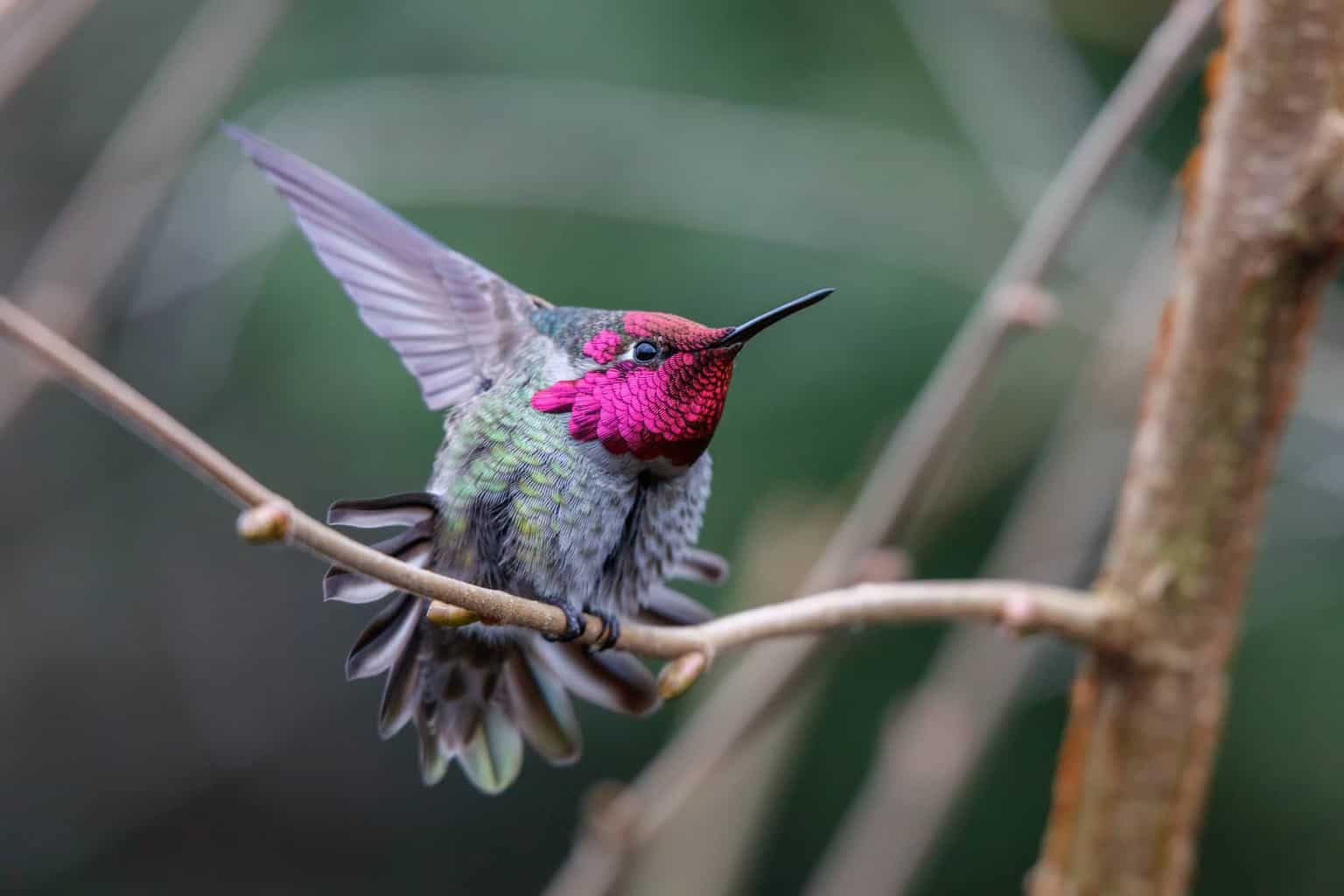Maine residents get to witness an absolutely incredible natural event each and every year. The arrival of the Ruby-throated hummingbirds is the culmination of a journey of more than 3000 miles, flown individually by birds that are the size of your thumb.
These birds fly over land and sea, sometimes including a 20-hour non-stop flight over the Gulf of Mexico, to journey from as far away as Central America, and arrive in Maine.
If that’s not something to celebrate, I don’t know what is! Maine, you have something amazing to look forward to! When should you get your cameras out and your hummingbird feeders ready? Read on and find out all about your own parade of living jewels!
When Will the Hummingbirds Arrive in Maine?
Maine’s only native breeding hummingbird, the Ruby-throated hummingbird, begins arriving in Maine in the first half of May.
Do the Hummingbirds Arrive in Maine All at Once or Gradually?
Hummingbirds do just about everything in their lives solo, including their incredible migration. They’ll make the long trip as individuals, not in flocks.
Male hummingbirds set out first. They’re on the lookout for the best food spots, and that’s where they’ll stake out their territories. They will defend their territories against all comers, whether they be male hummingbirds, larger birds, or sometimes even small mammals!
The females join the males about one to two weeks later. They’ll pick the ones they’re most impressed with, join them at the feeders and flowers, mate, and then build nests and rear young.

When Should I Put Out Hummingbird Feeders in Maine?
You should put out hummingbird feeders in Maine in mid-April, or about 1-2 weeks before you expect the earliest hummingbirds to arrive.
It’s good to put out your feeders a little early because the hummingbirds don’t always arrive on the same date. They have excellent memories and will return to the same feeders year after year, but if they come to your yard and there are no feeders out, they may be forced to move somewhere else to find something to eat.
Hummingbirds have to eat super-frequently to keep up their high-speed flight. Sometimes they eat as often as every five minutes!
Are the Ruby-Throated Hummingbirds Making a Comeback?
Unlike many other species of hummingbirds, which have been struggling, the Ruby-throated hummingbirds are actually growing in numbers!
From 1966 to 2019, their population grew an average of 25% per decade. It’s estimated that there are about 20 million breeding Ruby-throats overall.
You can help Ruby-throated hummingbirds stay strong by avoiding the use of pesticides, keeping all cats indoors, and planting pollinator-friendly native plants.
When Should I Take Hummingbird Feeders Down in Maine?
You can take down your hummingbird feeders in Maine in late October, or about two weeks after you last see a hummingbird use your feeders. The hummingbirds start to leave Maine around the end of September.
The Maine Audubon Society recommends leaving hummingbird feeders up for longer because there have been some unusual species rarely sighted late in the season, such as the Selasphorus hummingbird.
Hummingbirds return south individually, males first, then females, and finally the new batch of young hummingbirds, who have to finish fueling up for their first big trip. Your feeders may help a straggler get ready for their long journey.
You don’t have to worry that leaving your feeders up will prevent hummingbird migration. Each bird knows when it’s time to go thanks to its own internal clock, which is triggered by the changing length of the day. Hummingbirds migrate individually to help them make the best use of the food and resources available. They will go when they’re ready, and your feeders will provide a meal for hummingbirds about to take a very long trip!
Which Maine Flowers Attract Hummingbirds?
If you love hummingbirds, then you know that hummingbirds love flowers! They’re after that sweet, juicy nectar the flowers produce, and they fly north at just the right time to capture it as the flowers bloom for the spring.
You can draw hummingbirds to your yard by planting their favorite flowers. The best choice is to grow native Maine plants: they’re the best for the hummers and your local ecosystem, and they’ll be the easiest to care for in your area.
Here are some native Maine plants that hummingbirds love:
- Wild Bergamot (Monarda fistulosa)
- Red Columbine (Aquilegia canadensis)
- Cardinal Flower (Lobelia Cardinalis)
- Blue Cardinal Flower (Lobelia siphilitica)
- Bee Balm (Monarda didyma)
- Trumpet Honeysuckle (Lonicera sempervirens)
- Wild Lupine (Lupinus perennis)
- New Jersey Tea (Ceanothus americanus)
- Orange Jewelweed (Impatiens capensis)
- Elderberry (Sambucus nigra)
- Beardtongue (Penstemon digitalis)
- Obedient Plant (Physostegia virginiana)
Time to Welcome Hummingbirds!
Mark your calendars for the first half of May because that’s when the influx of hummingbirds begins in Maine! Enjoy their company all summer long as they raise their young, then say farewell at the end of September as they make their long journey south for the winter. Have fun with the hummingbirds!

